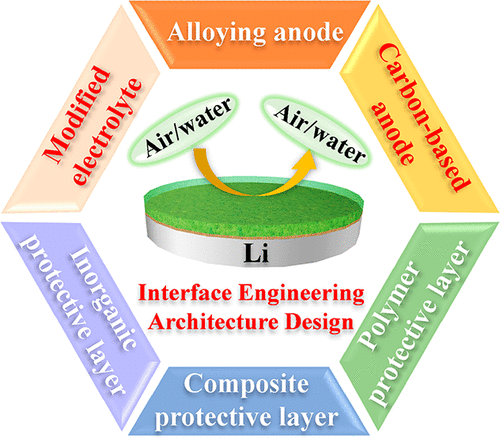Y.Y. Zhu, Y. Zhang, P. Das, Z.-S. Wu,*
Energy & Fuels, 2021, 35, 16, 12902–12920.
DOI: 10.1021/acs.energyfuels.1c01904 [PDF]

If meeting the industrial demand for energy storage technology to power the next-generation smart systems is the problem, then lithium metal as an anode for lithium metal batteries (LMBs) could be our best solution. It has the lowest negative electrochemical potential, ultra-high theoretical specific capacity, and ultra-low mass density.However, the high reactivity of lithium metal under environmental conditions triggers serious corrosion or safety problems. Therefore, air stability and water resistance are important factors in the design of practical LMBs.Herein, we review the research status and the latest progress of interface engineering and architecture design for protection of lithium metal anode (LMA) in air and water. First, a brief introduction is given to highlight the importance of developing air-stable and waterproof LMA for high-energy batteries. Then, the key strategies including the use of protective layers, modified electrolytes andcomposite lithium anodesproposed in recent years are comprehensively classified for suppressing the oxidation or corrosion of LMA in air and water. Finally, this review puts forth the current challenges and scrutinizes various strategies for LMA protection, and proposes possible future perspectives for continuous development of air-stable and water-resistant LMA.This review will be a helpful guideline for constructing high-energy-density LMBs in practical applications.